We all use some thermostats in the winter. It is one of the essential commodities that people need. It is impossible to suffer in winter if you do not have a thermostat with you.
Here, we will discuss how and when to use EM Heat On Honeywell Thermostat.
Let us get started with the article and learn about the EM feature. This goes for the emergency heat feature in our thermostat.
What Does EM Heat Mean On Honeywell Thermostat?
Quick Navigation
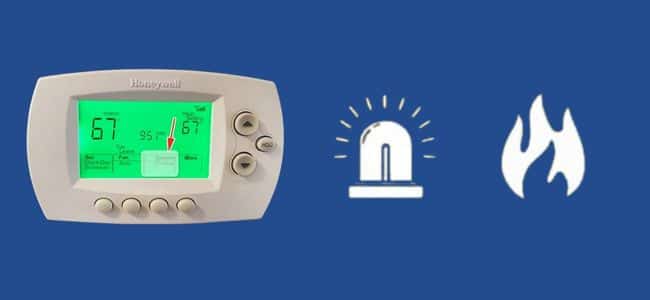
As mentioned in the introduction, EM heat is the emergency heat in your thermostat. As the name suggests, emergency heat will be used in times of urgency and emergency.
So this feature lets you switch to emergency heat when it is too cold outside. The feature switches the whole working and starts to work from primary mode to auxiliary mode.
This way, the thermostat heats the room with a backup strip. Usually, it heats the space using warm outside air. This feature acts as a backup for frigid days.
How To Use It?
The usage is quite simple in the Honeywell thermostat. You need to switch on the EM feature, and you are ready.
The EM formally switches from primary mode to auxiliary mode. The primary mode is when the thermostat regulates the temperature of your inner space.
This is done by sucking the air from outside and blowing it inside. But what happens in the EM heat? The EM heat regulates the temperature by switching to auxiliary mode.
In auxiliary mode, the thermostat regulates the temperature using a heat strip. This is used on very cold days when you need to heat the room in an emergency. This acts as a great backup.
When To Use?
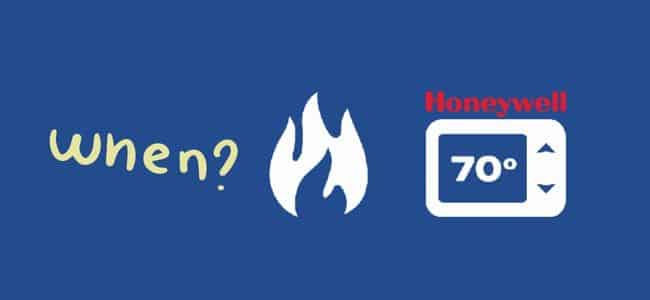
As mentioned in the above part of the article. The EM heat should be switched on when the temperature outside falls too low.
This means that the EM heat must be a need in the winter. Now, you can switch to the auxiliary mode when the temperature outside is very low.
You can also use a heat strip or gas furnaces. To save some money, you can use a gas furnace. Do not worry if the outside temperature rises in some time.
You do not have to do anything, but the thermostat will automatically regulate the temperature in your room accordingly.
Modes of Your Heat Pump
Your heat pump has three modes. It automatically switches to different modes depending on the climate. The modes are as follows:
1. Primary Heat pump:
This regular heating pump sucks the exterior air to heat the interior like an air conditioner. To cool the room, vice versa is done by the pump, where the interior air is sucked and expelled out into the atmosphere.
2. Auxillary Heating:
The pump switches itself to auxiliary mode when your room temperature is much cooler than normal because the primary heat pump cannot suck sufficient air to heat it. Here, an electric heat strip is present in the pump, lighting up as soon as electricity is passed through it.
It generates heat which, as a result, heats your room. But, in the end, you need to pay high electricity bills since this pump uses a lot of electricity.
3. Backup furnace:
This kind of furnace is an alternative for auxiliary heating. Gas stoves are used to provide the necessary heating for the space.
The heat generated by the combustion of gas is distributed throughout the room.
This mode of operation is preferred over the electric operation as gas is cheaper and at the same time heats the room very effectively.
Warning Against Switching to EM Heat Manually
The specialty of heat pumps is that they automatically switch to different modes according to the climate’s temperature.
You don’t need to adjust the temperature yourself since your heat pump will take care of the temperature and the mode. It will adjust the extra heating and return to normal mode when the climate changes.
We do not recommend manually switching to EM Heat. When EM Heat is turned on manually, the heat pump switches completely to backup mode.
It will not return to the primary mode when the temperature returns to normal until it is manually reversed.
If you forget to turn off the EM heat mode, your heat pump will continue to run in the auxiliary mode in warm weather, wasting your money. Best left to the Honeywell thermostat for switching.
Features of EM Heat
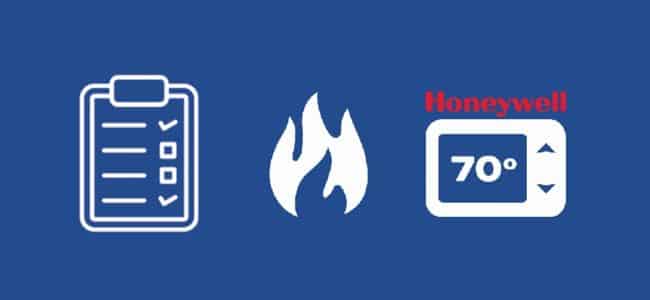
The efficiency of EM heat mode is much higher than that of normal heat pump mode. EM heat mode heats the air to very high temperatures and works at very low temperatures.
Using the thermostat in EM heat mode for a long time is very expensive. Therefore, its use should be limited to cold intolerable conditions and for short periods.
You can switch to EM heat mode if the heat pump is damaged or broken down. However, since an operation in EM heating mode is expensive, it is better to have the heat pump repaired as soon as possible.
Why Is My Thermostat On Emergency Heat?
If your thermostat is on, emergency heat is on, and you don’t need it, switch it off immediately. This happens sometimes. You may have switched on the EM by mistake.
Don’t worry; the thermostat will indicate whenever it is switched on. In most cases, an Led red light will pop up as soon as the EM is on.
Not only for emergency reasons but also due to financial costs, you must not switch on EM until and unless there is an emergency as it costs too much than the regular working of the thermostat, as it requires electricity or gas.
Should I Use Heat Or EM Heat?
The answer to this question depends on the temperature you want. The normal heat feature will ensure that the space is heated. The process will also be primary.
But if you switch on to EM heat, there is a high chance that the thermostat will switch to auxiliary mode, which will cost much more.
We recommend switching on EM only when you think of an emergency. If the situation is unavoidable and you have to switch it on, then only switch on EM. If you feel that your thermostat is not covering all the places, you should get a good smart thermostat for multiple zones under your budget.
FAQ
When should I put my thermostat on in emergency heat?
If the outside temperature drops too low, your thermostat will automatically switch on emergency heating, preventing your thermostat’s heat pump from pumping enough heat into your home.The thermostat automatically switches off the emergency heating as soon as it gets warm outside.
What’s the difference between heat and EM heat on my thermostat?
For thermostats, heat refers to the normal mode of operation in which warm air is drawn in from the outside and distributed to heat the house’s interior. EM heat refers to a second or additional mode of operation where the thermostat uses electric heating coils or gas furnaces to generate heat to heat and circulate the air around the home.
Does auxiliary heat come on automatically?
The thermostat automatically turns on EM Heat depending on the temperature outside your home. Similarly, EM Heat will automatically turn off when the temperature is normal.
How To Turn On Emergency Heat On Honeywell Thermostat?
If you watch very closely, then you will see that there are 3 features in your thermostat. The three features would be cool, heat, and EM, which is emergency heat. Now, you need to drag the button towards the EM option. Now, the EM option is enabled. The thermostat will work on emergency heat until and unless the temperature rises.
How to Know if EM Heat is Active?
When your EM heat is active, it will indicate it by a red light.
Final Talk
At last, we would like to conclude by summing up the article. We first discussed what is EM and the process of the EM feature. Then, we looked at how we could switch on the EM feature. What is the cost of the EM, and at what time do we have to switch on this feature? At last, we hope that this article has helped you gain information about the EM feature. We request you read the entire article before actually doing the process.
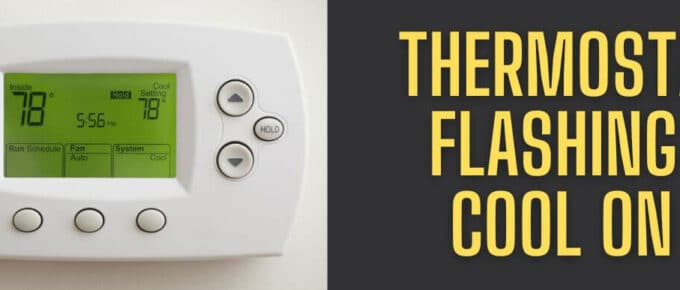
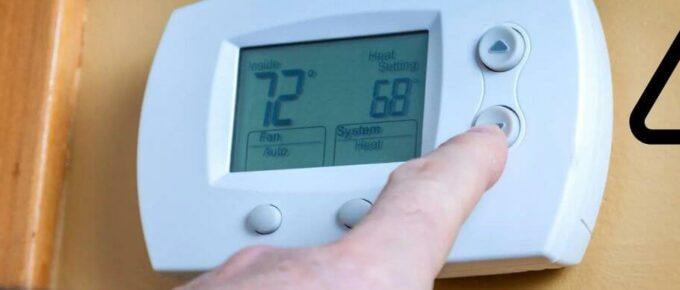

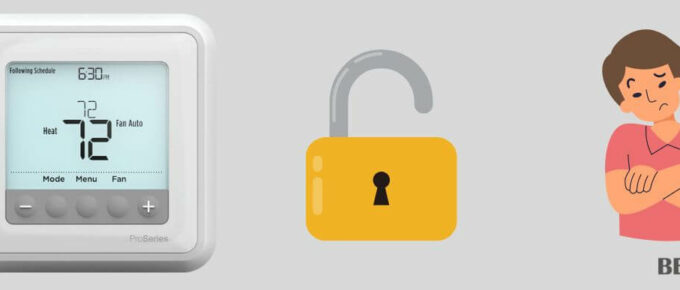

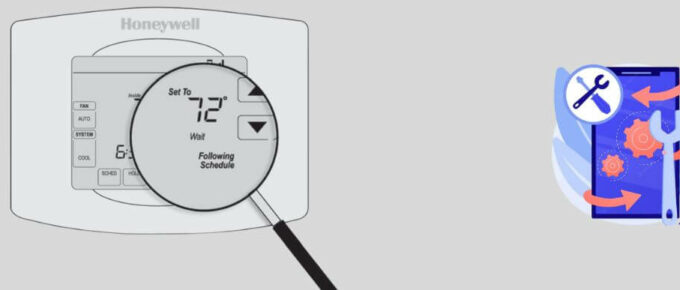
Worthless article as nowhere it specifies what that very low temperature is with numbers.